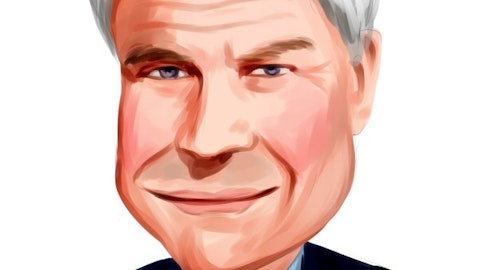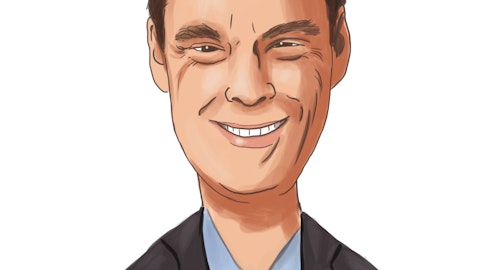So they are still going through this period of price discovery, but I think as we potentially stabilize with debt costs really kind of start to come to an end on the Fed Fund side and then spreads compressing and getting more towards the high 4s, low 5s borrowing cost, we could see more of that price discovery moving forward. If that occurs, I’d say, in terms of uses of capital, where we have been leaning into more so, I think the developer capital program continues to be a great place to put capital to work in this environment, both on new projects within development, but also within potential recap opportunities. So those present a good return, several hundred basis points higher than what we had been doing previously, but also a lower attachment point in terms of loan to values and loan to cost.
So we expect us to try to remain active there if we have capital. On the redevelopment side, we’ve got a pretty big redevelopment pipeline that we continue to build up that has a good opportunity to achieve pretty good returns as well as refresh assets and take advantage of the markets as they start to come back. So those are probably the two bigger pieces. To get there, we are exploring disposition activity in this market. So as always, we are exposing assets to market, including looking for potential JV partners, both on the operating development and developer capital program side. So if and when we have something there to discuss, we will bring it back to the market and talk about it, but we are looking at alternative sources to help us grow in this environment.
Anthony Paolone: Great. Thank you.
Mike Lacy: Thanks, Tony.
Operator: Thank you. Our next question is from Nick Joseph with Citi. Please proceed with your question.
Nick Joseph: Thanks. You touched on the blended rent growth and kind of on the market side, but just from the data you’re collecting and I recognize it’s a lower traffic time period so maybe we can go back for the past few months, is there anything you’re seeing change from a migration trend perspective? Obviously, we’ve seen some better growth in the Sunbelt on that side, but wondering if there is anything changing in the data?
Mike Lacy: Not really, Nick. I’ll tell you, overall, we are seeing less people move out of MSAs, but also less people moving in from outside of the MSA. And just to give you a few stats to put it in perspective, move-outs right now, 25% move-outs from the MSA versus 27% last year. And for move-ins, what we’re seeing, 29% move-ins from outside of the MSA, and that’s versus 31% last year, so not a big difference. And basically, they are back to kind of pre-COVID levels.
Joe Fisher: Yes, I’d say two other things. It’s kind of demographically and you mentioned traffic as well there, Nick. Demographically, one of the big macro tailwinds that I think we have going into this year and help support kind of our outlook is homeownership rate overall. We do expect that to come down. So given the relative affordability dynamic between single-family housing and multifamily housing, we think we do have a tailwind there. So that’s going to help on the demographic or household formation side for multifamily. The other thing, just you mentioned the low traffic period. 4Q was a lower traffic period. I think our traffic got down to about flat year-over-year. So perhaps a little bit less demand in fourth quarter.





